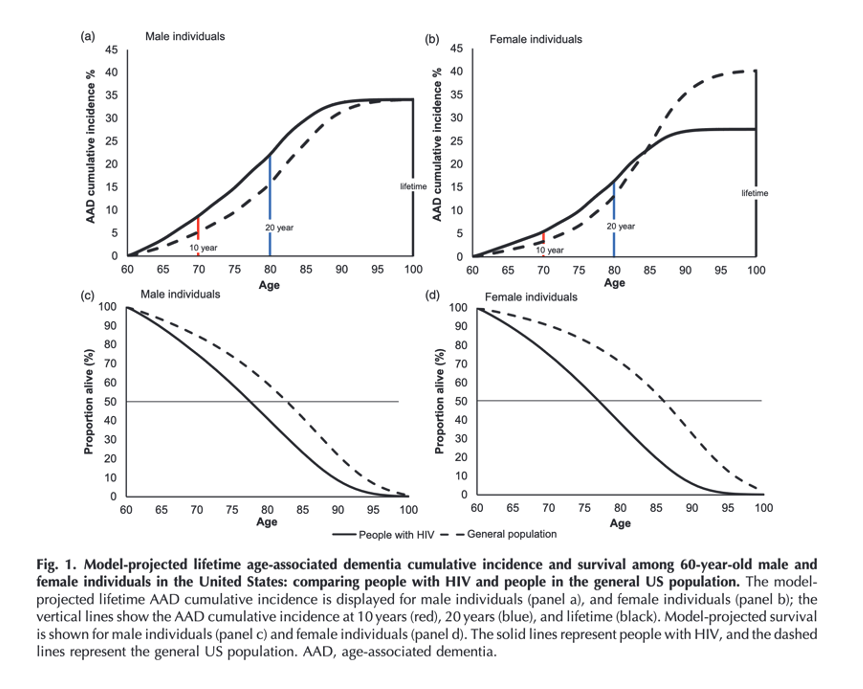| |
Age-associated dementia (30%) among older people aging with HIV in the United States: a modeling study
|
| |
| |
Download the PDF
July 1 2024
"we projected that 34.1% of male individuals and 27.5% of female individuals who are 60 years old and living with HIV would develop AAD over their lifetimes. Disparities in AAD cumulative incidence between people with and without HIV would increase later over a lifetime"
"non-HIV-related mortality and rates of engagement in HIV care, had a substantial influence on the cumulative incidence of AAD….national guidelines for the care of people with HIV do not include any specific guidance regarding the neurologic evaluation of people aging with HIV and offer no recommendations on best practices for cognitive impairment testing"
Abstract
Objective:
Almost 400 000 people with HIV (PWH) in the United States are over age 55 years and at risk for age-associated dementias (AAD), including Alzheimer's disease and vascular contributions to cognitive impairment and dementia (VCID). We projected the cumulative incidence and mortality associated with AAD among PWH at least 60 years in the United States compared with the general population.
Design/methods:
Integrating the CEPAC and AgeD-Pol models, we simulated two cohorts of 60-year-old male and female individuals: PWH, and the general US population. We estimated AAD incidence and AAD-associated mortality rates. Projected outcomes included AAD cumulative incidence, life expectancy, and quality-adjusted life-years (QALYs). We performed sensitivity and scenario analyses on AAD-specific (e.g. incidence) and HIV-specific (e.g. disengagement from HIV care) parameters, as well as premature aging among PWH.
Results:
We projected that 22.1%/16.3% of 60-year-old male individuals/female individuals with HIV would develop AAD by 80 years compared with 15.9%/13.3% of male individuals/female individuals in the general population.
Accounting for age-associated and dementia-associated quality of life, 60-year-old PWH would have a lower life expectancy (QALYs): 17.4 years (14.1 QALYs) and 16.8 years (13.4 QALYs) for male and female individuals, respectively, compared with the general population [male individuals, 21.7 years (18.4 QALYs); female individuals, 24.7 years (20.2 QALYs)]. AAD cumulative incidence was most sensitive to non-HIV-related mortality, engagement in HIV care, and AAD incidence rates.
Conclusion:
Projected estimates of AAD-associated morbidity, mortality, and quality of life can inform decision-makers and health systems planning as the population of PWH ages. Improved AAD prevention, treatment, and supportive care planning are critical for people aging with HIV.

|
|
| |
| |
|
|
|